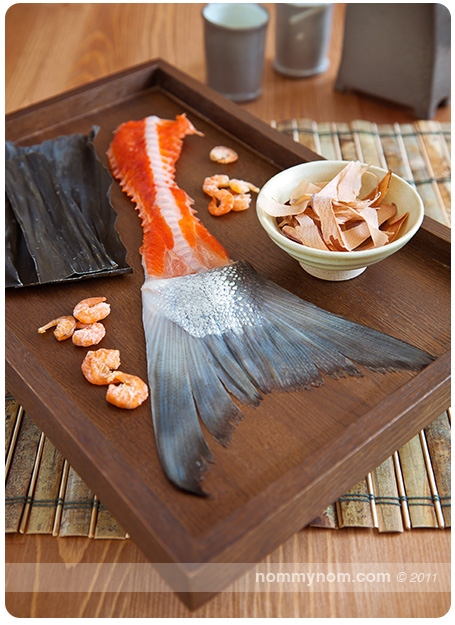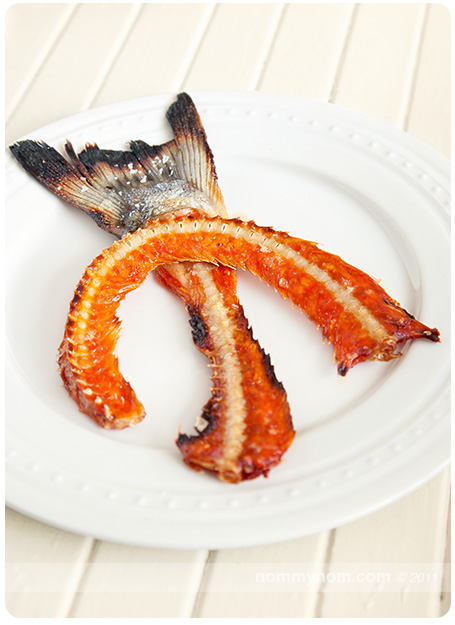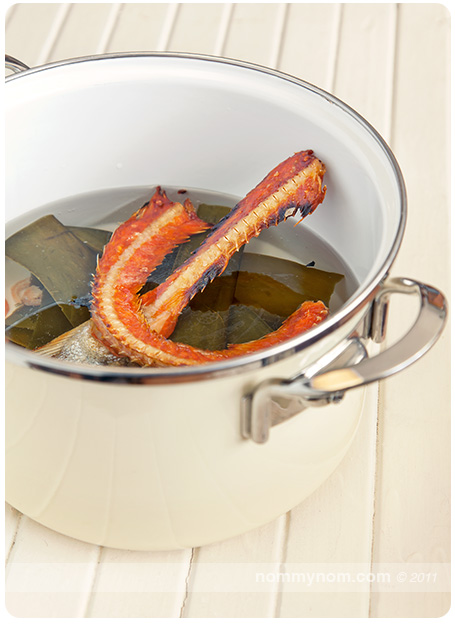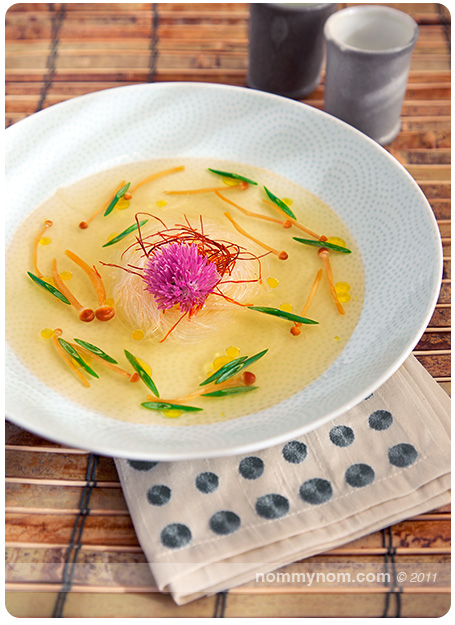It’s Copper River Salmon time of year again! This is one of my all time favorite fish and I look forward to its return every year. The folks at the Alaskan Department of Fish & Game have taken great care to manage the runs each year to ensure that this delicious fish remains sustainable for a long time to come, so you can eat and feel good about the fact that you are supporting sustainable seafood.
All that field management comes at a cost for the consumer. Limited runs means a higher price tag at the register, but when you think of the long term, it is worth it to pay a little more to support sustainable practices. It’s an investment in not only our culinary future but the future of the wild life itself. This type of management is something that makes sure that we have this delicious wild caught fish to enjoy for generations to come.
So this year I went out and picked myself up a whole Copper River Salmon and butchered it down to two gorgeous ruby red filets. This left me with quite a bit of “trim scrap” and bones. I do not like wasting food, especially when it is as special as this salmon. I took the trim scraps and sealed them for freezing for a later use. Which left me with the bones.
Lately, I have been getting really inspired by a friend of mine who goes by the name of Lovely Lanvin. She teaches Asian cooking classes and currently has an upcoming class at Williams Sonoma on June 11th. When I looked at my bones I thought I should make a fish stock. Then I looked at them again, and in a fleeting moment her wonderful inspirations of late made me shout out DASHI!
Dashi is a beautiful Japanese soup base. If you’ve had Miso Soup then you have had Dashi. There are several kinds of Dashi – some of which depend on the ingredients and some of them depend on if those ingredients were already used to prepare a Dashi. This particular recipe is my own version of this traditional soup.
Having made Kombu and Katsuo Dashi many times in the past, I figured I would start off there. I really wanted multiple layers of flavor for this broth so I decided to use Kombu, Bonito flakes, Dried Shrimp and toasted Salmon bones. Something that celebrated using and respecting every part of this beautiful piece of Salmon.
After preparing and straining it I put it in a clear jar. When I first looked at it, a pale golden broth that was perfectly clear, I got a little worried thinking that perhaps it might be weak in flavor. Then I took a taste. It was so rich and flavorful, the Kombu lent it’s salinity for a slight taste of the sea as a solid foundation to the Dashi. This was followed up by the richness given by the layer of flavor from the Bonito and Dried Shrimp… and finally the bold, savory, toasty finish of the Salmon. As satisfying a Dashi as I have ever made.
Now I know for some, this sound exotic and daunting, but Dashi really is one of the easiest soups that you can make and it is extremely versatile. It is a good recipe to have in your culinary repertoire, as it is a base to so many beautiful Japanese soups and sauces.
For serving my Dashi I chose to go with fresh Herbs, little Golden Enoki Mushrooms and some glass noodles to let the broth really shine. I hope that my little culinary experiment, born of not wanting to waste a beautiful ingredient, is something that you will try for yourself. And I hope that I made Lovely Lanvin proud with this one!
Recipe: Copper River Salmon Dashi
Summary: An upscale version of a of traditional Dashi
Ingredients
6 Quarts Water
2 Pieces of dried Kombu (about palm sized or 4×6″)
1/2 Cup Bonito Flakes
1/8 Cup Dried Shrimp
Salmon Bones and Tail
Instructions
In a large non-reactive stock pot add the water Kombu, Bonito Flakes and Dried Shrimp. Set aside while you toast your fish bones.
Using your broiler set to 400º, toast your fish bones on a sheet of foil, until they are golden brown. You will want to leave your oven door open, it will get a little smoky and you do not want to smoke your bones or they will develop an acrid smoke taste. Remove the bones once they are toasted and add them to the stock pot.
Turn your burner on to Medium and bring the stock pot up to a gentle roll for 10 minutes. Remove the Kombu from the pot.
Turn the burner down to Low and let it simmer untouched for 20 minutes. Remove from the Dashi from the heat. Using a fine mesh colander or 3 layers of cheese cloth strain the Dashi so you are left with a lovely clear broth. It is now ready to be served or used in a recipe, such as Miso Soup.
Quick Notes
-You can use any fish bones you want or omit them if you prefer.
-Use this as a base for Miso Soup
-You can add ramen, soba or rice noodles
-You can add more flavor by adding fresh chives, scallions, mushrooms, chili flake to the base Dashi. Be creative!
Cooking time (duration): 60
Diet (other): Low calorie, Gluten free
Number of servings (yield): 4
Culinary tradition: Japanese
Resources for specialty ingredients: In Seattle my favorite place to go is Uwajimaya. For my friends who live outside of Seattle, Amazon has several gourmet and specialty ingredient shops that supply these special ingredients. Just do a search for the ingredient by name.
Full disclosure: I have received no compensation from any business or organization mentioned for this article.






Kelly, you made salmon bones look extremely sexy; love it!! Have never considered saving my fish bones for a fish stock, and I don’t know why. I save all other bones for just that. You have inspired me to aspire to be a less wasteful cook, but attempting this delicious sounding recipe! Thank You!
Aww thanks you guys :) I made up a couple more batches and we’ve had some soba and prawns in the dashi broth oh my goodness – it’s such a great soup base.
With the way food prices keep rising, I’ve been trying to practice using as much of an ingredient as I can. Like I have been saving vegetable trimming to use to make vegetable stock. I even put some corn cobs in to some water and milk and made a chowder base that I added the Copper River Salmon collar meat to for a wonderful salmon corn chowder. I’m having a blast discovering ways to make the most of the ingredients :)
If you are wondering how long to grill, or to cook salmon, the general rule for fish fillets is 10 minutes per inch of fish. However most wild salmon connoisseurs recommend cooking salmon until it is medium to medium rare because they do not want to risk overcooking. Check to see that the salmon is flaky in texture.
I like to pull mine right around Medium, and time really depends on how hot your grill is. But the general rule is the jumping off point. I start checking them when they should be about 2/3rds of the way cooking by gently opening one up and peeking inside.